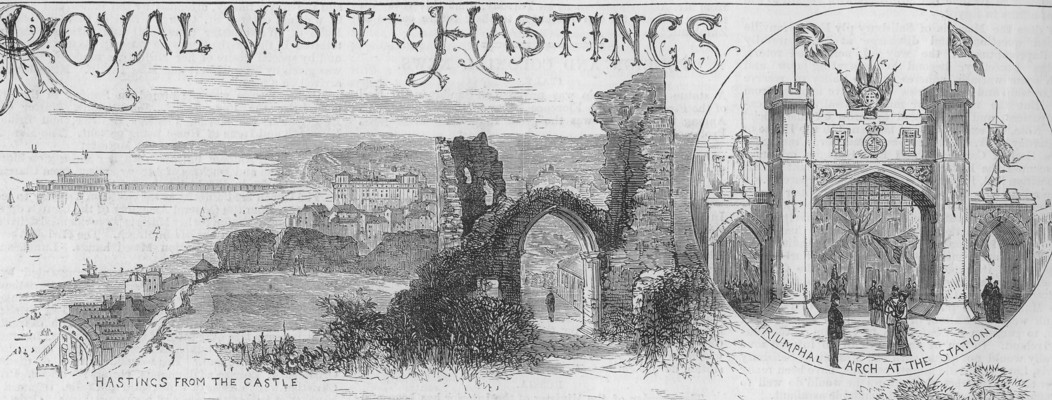On Monday last, the Prince and Princess of Wales spent the day at Hastings and St. Leonards, and presided at the opening of the Alexandra Park and of the Convalescent Home for Children. Their Royal Highnesses arrived by special train from London at half-past twelve, attended by Lady Suffield, Lieutenant-General Sir Dighton Probyn, Colonel Clark, and the Rev. T. Teignmouth Shore. They were received by the Mayor of Hastings (Mr. Revill), the Deputy Mayor (Alderman Gausden), the Recorder (Mr. R. R. Hurst), and the Town Clerk, attended by the officers of the Corporation. There were also present the Duke of Cleveland, the Earl of Ashburnham, the Earl of Aylesford, Mr. C. J. Murray, M.P., and Lady Anne Murray; Sir Thomas Brassey, M.P., and Lady Brassey; Mr. Inderwick, M.P. (Mayor of Winchelsea), General Newdigate, Lieutenant-Colonel Tubbs, commander of the Cinque Ports Artillery Volunteers; Commander Woodruffe, commander of the Coastguard; Mr. Myles Fenton, general manager, and Mr. J. Shaw, secretary of the South-Eastern Company; and Mr. J.P. Knight, general manager of the London, Brighton, and South Coast Railway. The A company of the 1st Cinque Ports Rifles, under the command of Captain Weston, formed a guard of honour on the platform with the band of the 1st Middlesex Yeomanry Cavalry. When their Royal Highnesses alighted from the train the Duke of Cleveland introduced to them the Mayor and the other members of the Corporation. A Portrait of the Mayor, with the arms of this ancient borough, will be found among the Illustrations engraved for another page. Miss Revill, daughter of the Mayor, had the honour of presenting a bouquet to the Princess. The Recorder then read an address of welcome, to which the Prince replied. A procession of carriages was next formed, headed by mounted police and a troop of the Middlesex Yeomanry, the carriages containing their Royal Highnesses and their suite coming last, and being followed by a yeomanry escort. As the procession left the station a salute was fired from a battery, and loud cheers were given by the spectators assembled outside. The carriages proceeded down Havelock-road, along Queen's-road and St. Andrew's-road, and entered the park by the St. Andrew's entrance. Dense crowds had assembled along the entire route; every balcony and window was filled with ladies, and bursts of cheering and waving of handkerchiefs testified to the Royal visitors how warm and genuine is the affectionate feeling with which they are regarded.
SOURCE: The Illustrated London News, July 1, 1882, p.14
